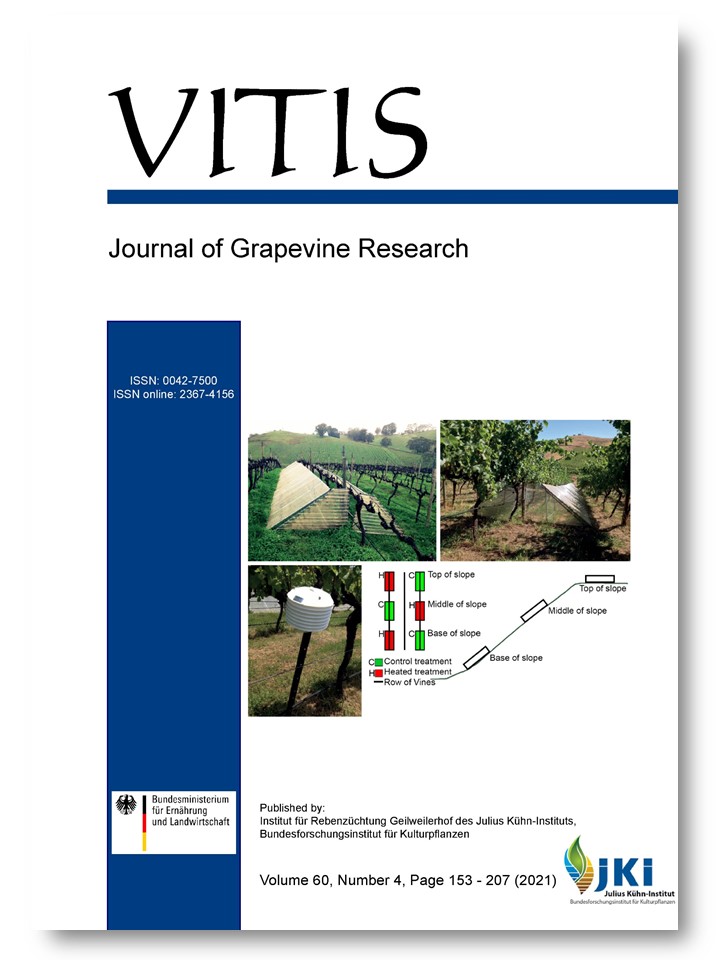Physiological changes induced by either pre- or post-veraison deficit irrigation in 'Merlot' vines grafted on two different rootstocks
DOI:
https://doi.org/10.5073/vitis.2021.60.153-161Abstract
Reduced summer precipitations and higher evapotranspiration due to elevated temperatures are expected to enhance the impact of water deficit in modern viticulture. We investigated the effect of the timing of deficit irrigation on vine growth, water relations, yield and grape composition in 'Merlot' vines grafted on 1103P or SO4. In both years we did not measure any differences between rootstocks in stem water potential (SWP). Vegetative growth was decreased by the restriction of irrigation between fruit set and veraison. Stomatal conductance (gs) was affected by irrigation, but not by the rootstock. During the pre-veraison period there was a clear inverse relationship between gs and SWP. The leaf non photochemical quenching readily responded to the stress imposed on 1103P rootstock. Vines subjected to water deficit between fruit set and veraison produced smaller berries than well irrigated ones, whereas deficit applied after veraison determined about 10 % differences in berry weight. The highest and lowest values of pH and TA were measured in berries from pre-veraison deficit irrigated vines grafted on both 1103P and SO4, respectively.
Downloads
Additional Files
Published
Issue
Section
License
Copyright (c) 2021 The Author(s)

This work is licensed under a Creative Commons Attribution 4.0 International License.
The content of VITIS is published under a Creative Commons Attribution 4.0 license. Any user is free to share and adapt (remix, transform, build upon) the content as long as the original publication is attributed (authors, title, year, journal, issue, pages) and any changes to the original are clearly labeled. We do not prohibit or charge a fee for reuse of published content. The use of general descriptive names, trade names, trademarks, and so forth in any publication herein, even if not specifically indicated, does not imply that these names are not protected by the relevant laws and regulations. The submitting author agrees to these terms on behalf of all co-authors when submitting a manuscript. Please be aware that this license cannot be revoked. All authors retain the copyright on their work and are able to enter into separate, additional contractual arrangements.



